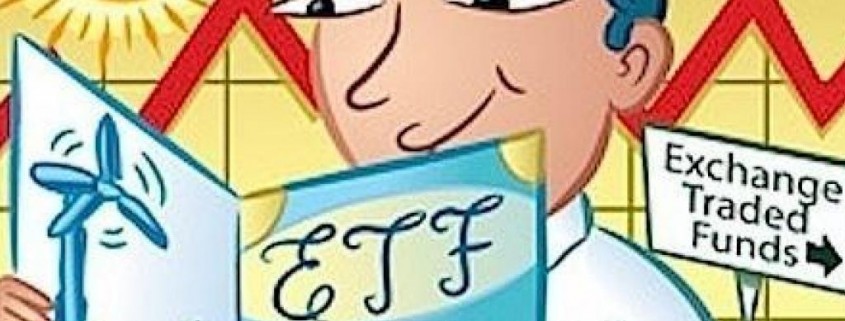Maximize Your Portfolio with ETFs
Many people enjoy trading ETFs as they present a simple and diversified method of trading an index or commodity. Although investors may have a preference for certain ETFs, most investors do not have a system in place for trading ETFs. In this article we’ll look at what specifically an ETF is, the benefits of ETFs, and a way of trading ETFs that can be both lucrative yet safe at the same time.
To begin with the basics, ETF stands for Exchange Traded Fund. As the name suggests, it is a fund that is traded, like a stock, on a stock exchange. The fund tracks an index, commodity, or a basket of assets. For example, there are funds that track various exchanges (such as SPY which tracks the S&P 500 and is comprised of over 500 selected stocks over 24 industry groups); there are funds that track a commodity (such as SLV which roughly tracks the price of silver); and there are funds that track other assets such as bonds, real estate (REITs), currency, etc. ETFs cover everything from broad-based indexes to international and country-specific indexes to industry sector-specific indexes.
The benefits to ETF trading are numerous. They include:
- Diversification over a number of assets and the relative stability of an index fund.
- Ability to buy as much or as little as you want, just as you would a stock.
- Ability to buy long or short, and with hedging strategies, just as you could with a stock.
- Expense ratios of ETFs are usually lower than most mutual funds due to lower marketing and distribution expenses and the fact that ETFs are usually not actively managed.
- Ease of investing in commodities which otherwise would be difficult to acquire (oil for example – very messy to own physically; or silver as another example – a $50,000 purchase of the physical metal is extremely heavy to carry home!)
- Transparency in terms of both the portfolio as well as pricing which is updated constantly throughout the day.
With this background, let’s look at one possible strategy of maximizing an investment portfolio through the addition of ETFs.
First, always consider risk management. We would suggest investing roughly 10% of your overall portfolio into ETFs, with each ETF representing only 1% of your overall.
Next, focus on the “Hot Hands” concept. Basically you are buying the top performing funds of the recent past and holding onto them for the upcoming period. We suggest using a period of one month. ETFs that perform well during one month can be expected to continue doing well the next. Start off by purchasing the top 10 performing funds of the last month. Of course not all will do well, and each month you will remove those that drop from the top 10 list and add the new ones that enter the list. By following this technique, you will always have the best performing ETFs in your portfolio! All you require is a listing of the top performing ETFs and you simply select the top 10 – the work is already done for you!
A final thought on maximizing the profits in your ETF portfolio is to take advantage of seasonality trends. Not all stocks (and therefore ETFs) act the same in bearish and bullish seasons. Although summer is considered ‘bearish’, the Dow Utility stocks tend to act bullish during this time. At the beginning of April, you may want to start looking at “IDU” (an iShares ETF that mimics the Dow Utilities). IDU is generally bearish from May to September.
By playing an ETF such as IDU, you are trading the whole index, not an individual stock, and this is important. When we are looking at deep seasonal undercurrent patterns, the effects of these are more visible in the whole market itself rather than any one individual stock.
As winter rolls around, IDU tends to turn bearish, and our focus is better drawn to the Dow Industrials, which are usually bullish from October to April. Again, we want to look at trading the whole index here, and a great way to do this is through the “DIA” iShares ETF which mimics the Dow Industrials.
In summary, ETFs are a great way to play a market sector and have many advantages over both regular stocks as well as mutual funds. By utilizing some of the strategies we’ve discussed here you now have an advantage over other traders, benefiting both your portfolio as well as your pocketbook!
Article Source: http://EzineArticles.com/6459175



Leave a Reply
Want to join the discussion?Feel free to contribute!